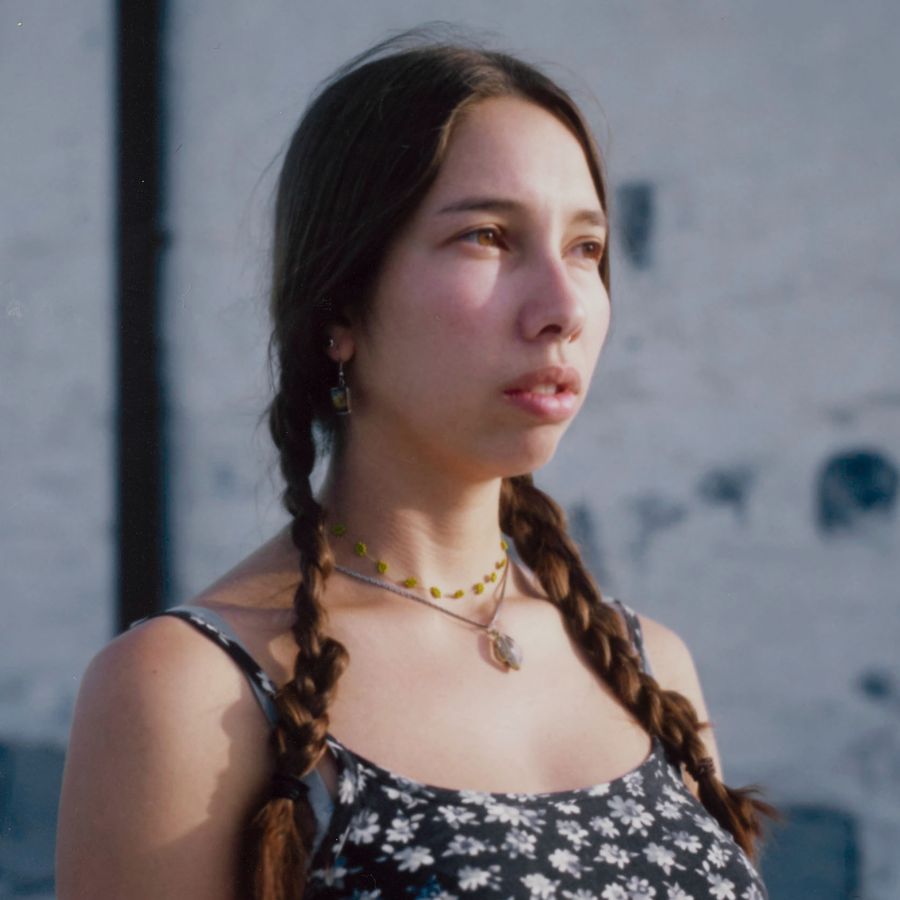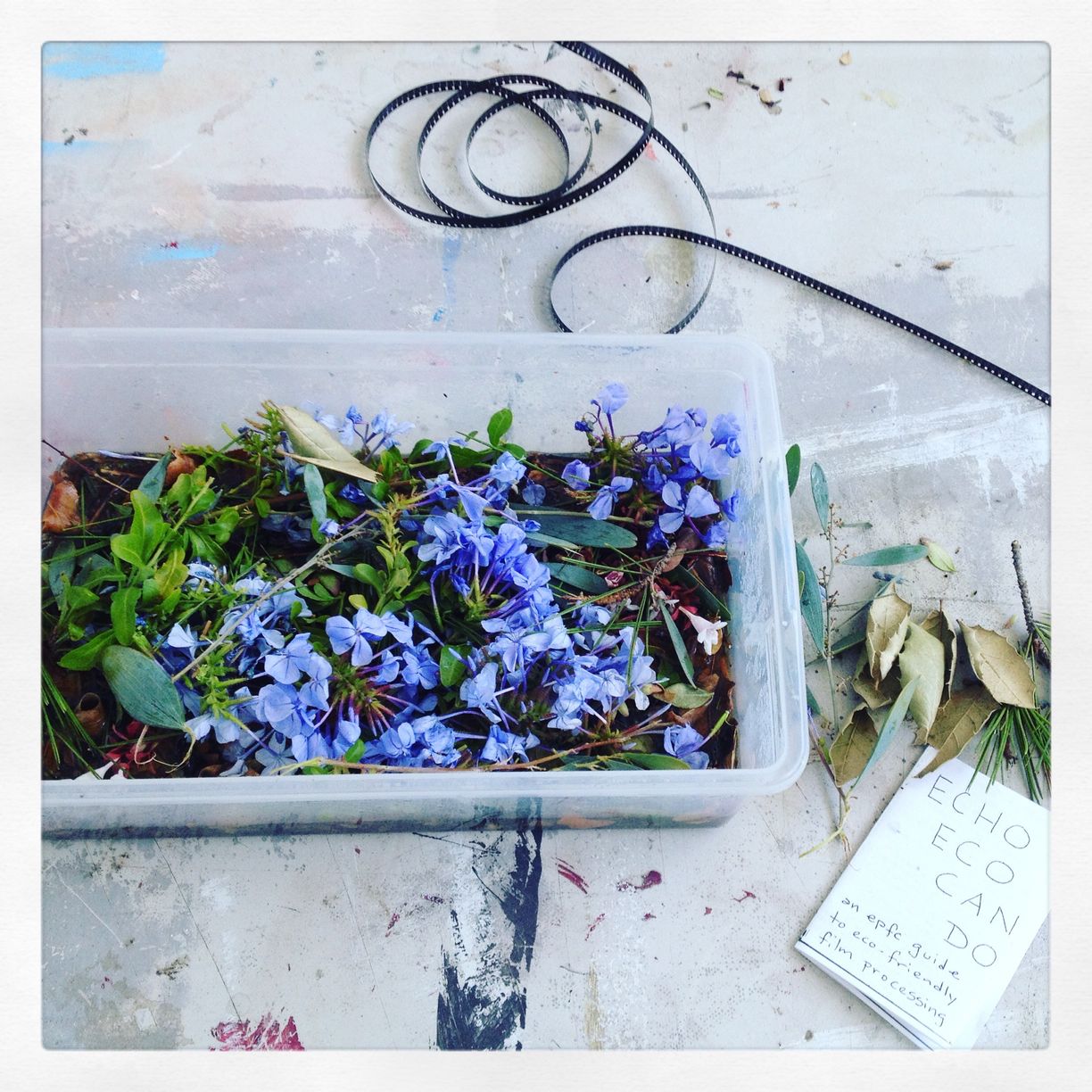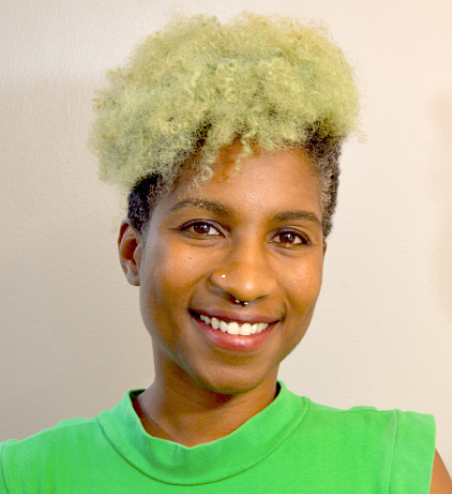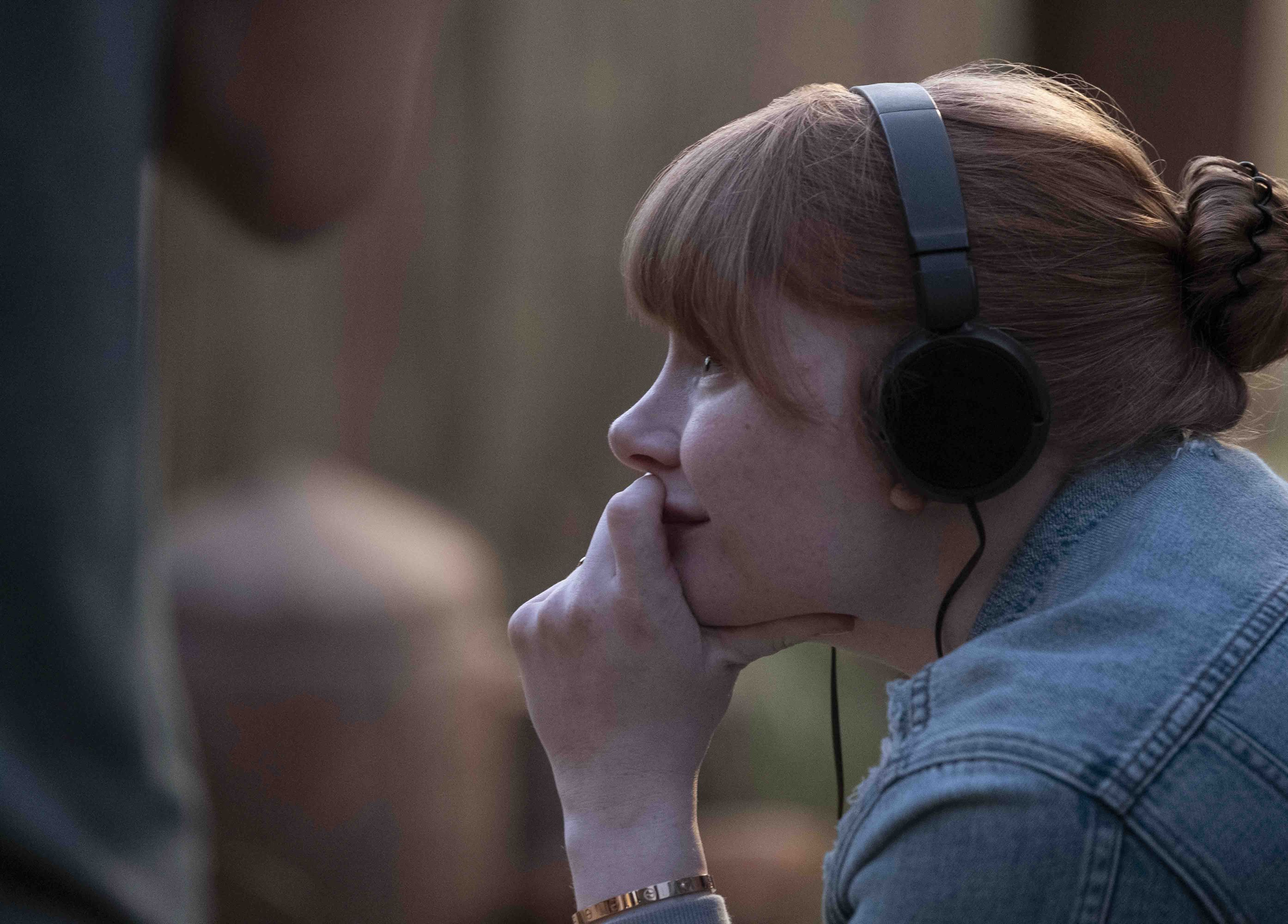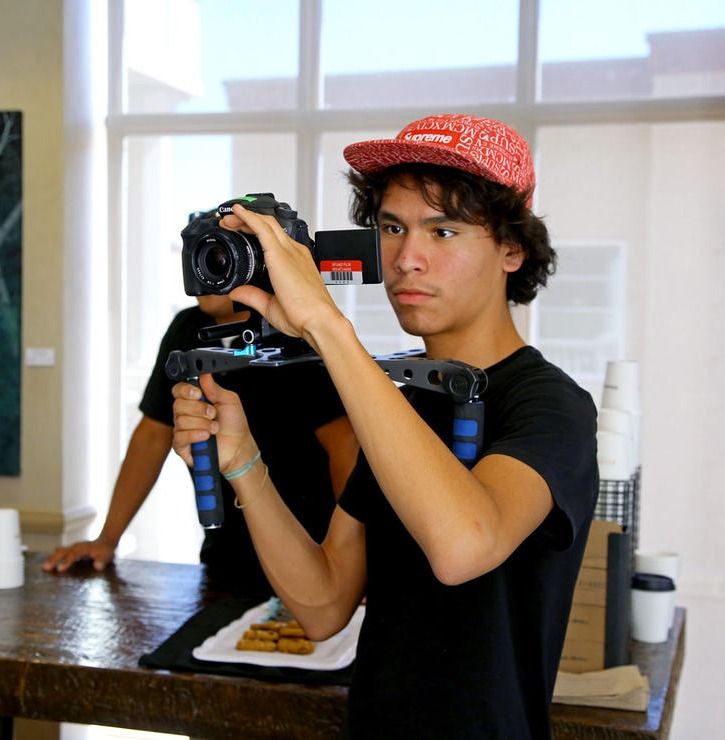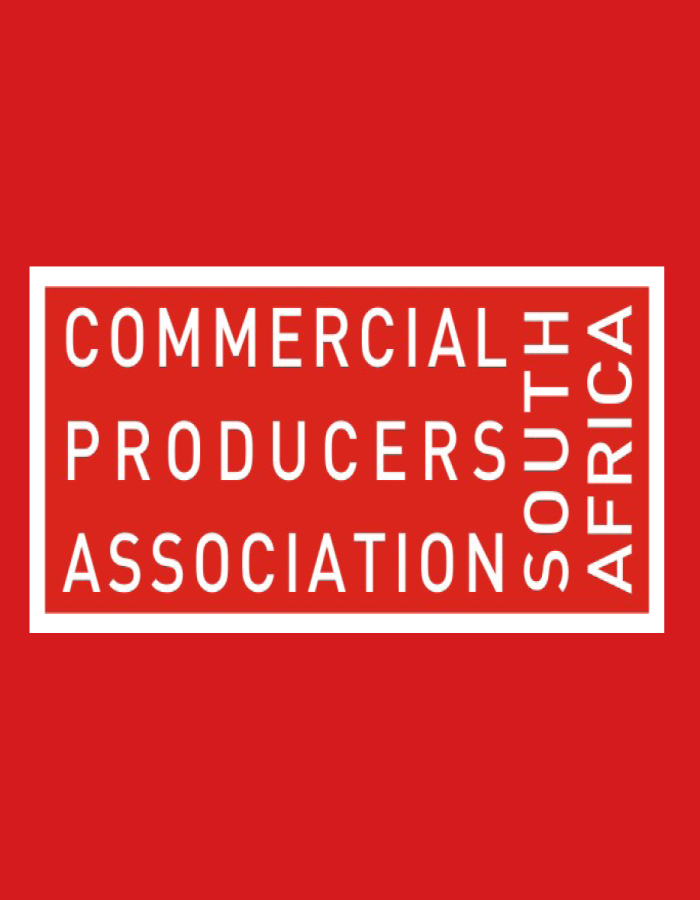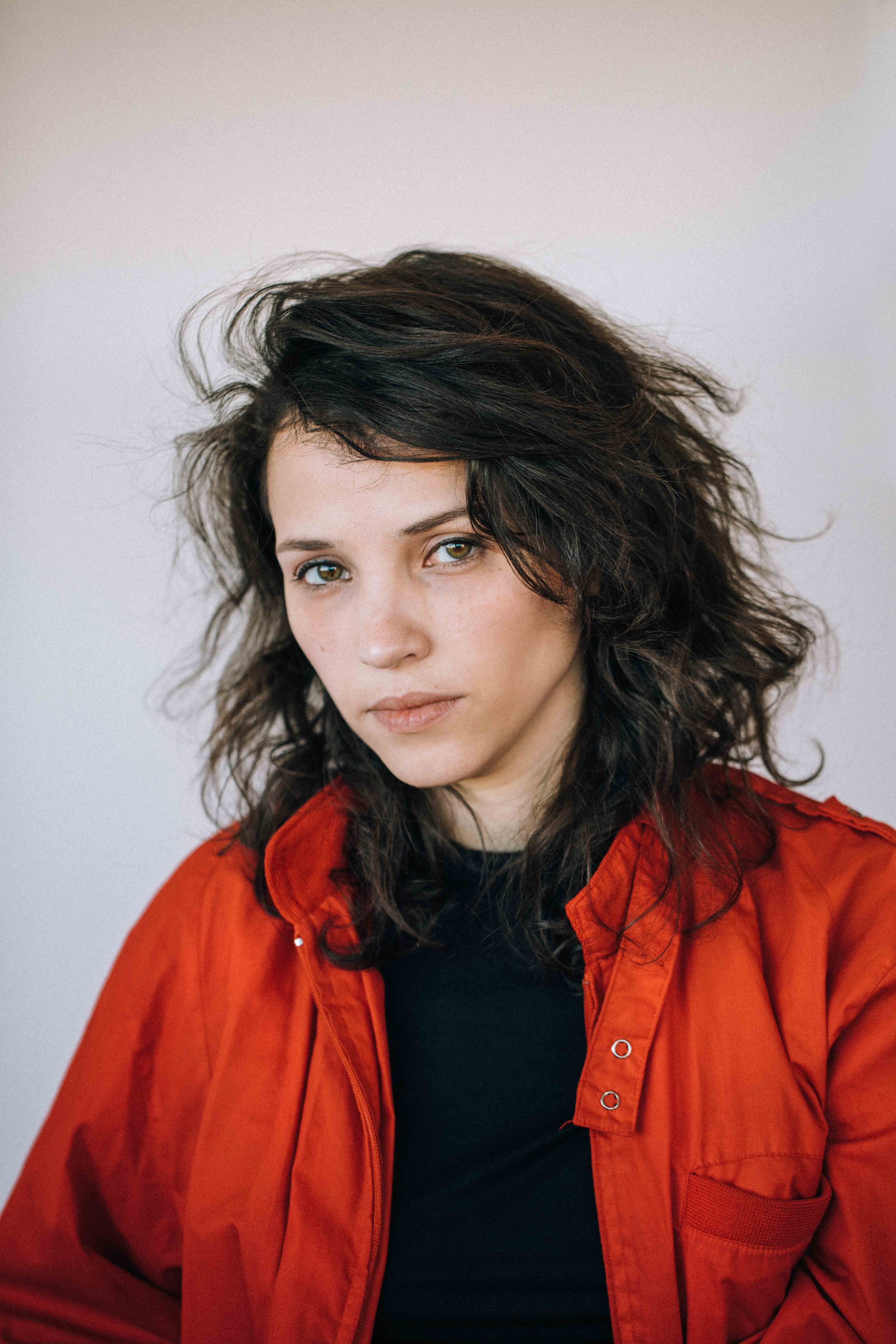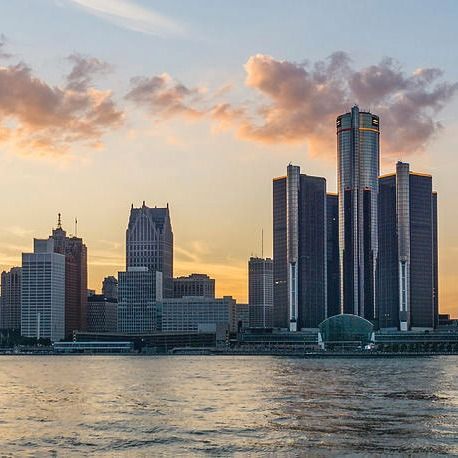Why should you trust this guide?
Well, to put things simply: Echo Park Film Center is the real deal.
Established in 2001, Echo Park Film Center is a non-profit media arts organization committed to providing equal and affordable access to film/video resources via a community-curated microcinema featuring experimental and documentary screenings with filmmakers in attendance, free and nominal-cost workshops for all ages, a comprehensive film/video equipment and resources shop, a fleet of eco-friendly mobile cinema/film schools, local and international artist residencies, and touring festivals featuring local emerging and established filmmakers.
EPFC feels that it is imperative that more members of media-marginalized populations become active participants in the creation and dissemination of experimental and documentary film in order to truly reflect the many voices and visions that make up the fabric of contemporary American life. Using community cinema as catalyst, EPFC strives to provide programs and services that inspire, educate, and activate.
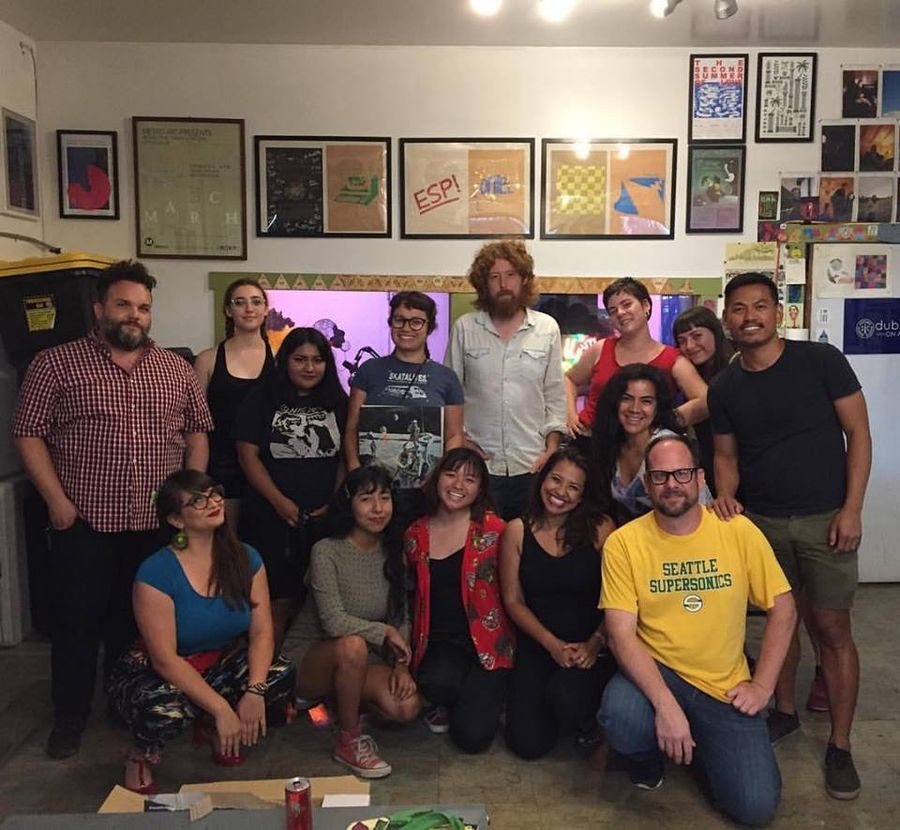
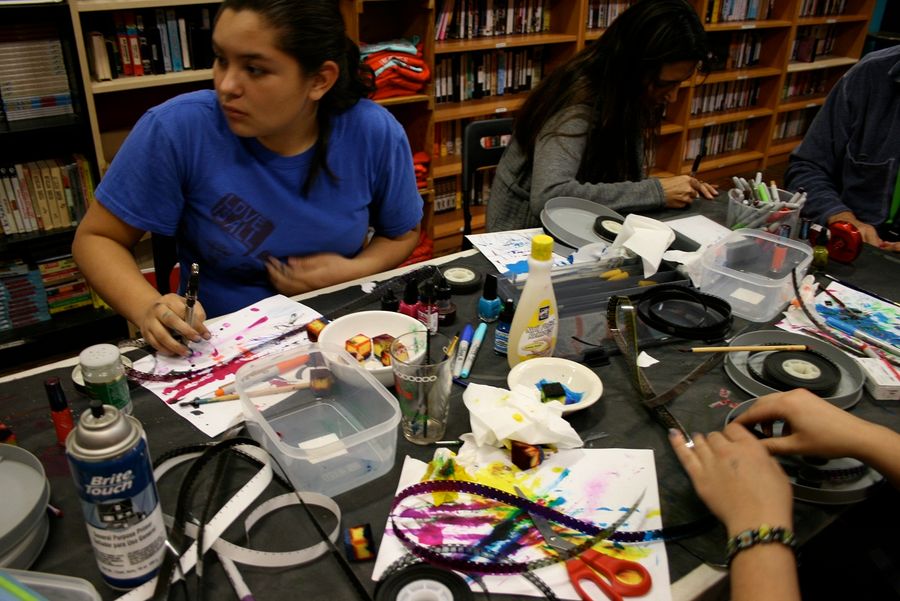
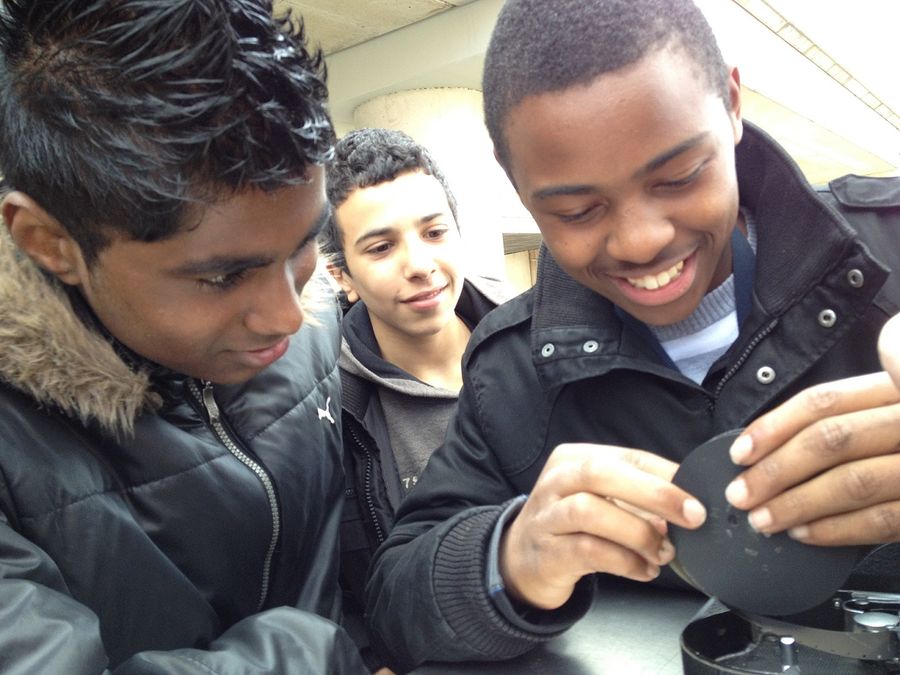

From left: Direct animation, Loading the camera, and Editing 16mm film / Courtesy of Echo Park Film Center
WHY BOTHER SHOOTING ON FILM?
Process
When you have a limited amount of film available, each second you shoot is precious. In the digital era, you can photograph everything and anything but then sorting through it all can be a mess and often you realize what you shot wasn't as planned out as it could have been. With film you have to really decide what and when to shoot. I find that the process of being limited often changes the end product into something more thoughtful. I believe if you shoot on film it will make you a better digital filmmaker as you can take the lessons of patience and careful decision-making with you on your digital projects.
Aesthetic
With Super 8 and 16mm film, a grainy quality is added to your image. Some people mess with the processing to give the film a more DIY or distorted feeling. There is a lot of texture you can gain by shooting on film over shooting on pixels.
Tactility
You can touch film, grasp it, scratch it, cut it, draw on it, collage with it, tape things on it! The tangible quality of film is my favorite part as it’s something I understand. I don’t truly understand what a pixel is and the ways you manipulate them are done in codings that distance the filmmaker from the film. With physical film, every action you do to it will be seen through the projector. The possibilities are really endless. You don’t even need a camera to make a film on film. Stan Brackage, an experimental filmmaker from the 60’s, made Moth Light by pasting parts of dead moths he found in his house onto a clear roll of celluloid. This process shows you exactly how moving image works; the light, the movement and the shadows are all present and that's what films are composed of!
Animations
You can also draw on film to make direct animations. If you draw an image per frame 24 times onto clear leader (the plastic base that film emulsion is coated on), that will give you 1 second of that image. Altering each image slightly gives the illusion of movement; this is the heart of how movies work and a really fun technique to try for yourself. You can also draw or write on top of a film you have already shot on or “found footage” you may come across at thrift stores, garage sales or the family attic.
GOOD FILMS FOR INSPIRATION
Everything I’ve seen come out of the EPFC classes and Co-op members has been really cool.
Chinatown Take Out (2017) is a great film a youth class made at EPFC on 16mm about neighborhood gentrification.
One film that has inspired many of us as filmmakers, as activists, and as Angelenos is The Exiles (1961) by Kent Mackenzie which follows the lives of Native American teenagers living in Bunker Hill before it was demolished to create space for high rises in DTLA. This film is a B&W film that shows what film shooting is capable of.
If you’re interested in more contemporary work, the EPFC microcinema screens experimental and documentary films by local and visiting filmmakers every Thursday and Saturday night at 8 pm. There are many more on our Vimeo page too!
THE DIFFERENCES BETWEEN TYPES OF FILM
The names of films (8mm, Super 8, 35mm, 16mm etc.) are based on the width of the film itself. Imagine a strip of film is a canvas that you will do your painting on: the larger the surface area is, the more detail you can add to your painting.
-
70mm film is very large and was often used to shoot special effects scenes because of the quality of the detail.
-
Most feature films shot on film will be 35mm.
-
16mm was common amongst experimental filmmakers during the avant-garde era and still today is often used by students making short films. It’s a nice compromise between the small home movie Super 8 films and the expensive large camera 35mm film.
-
8mm was first introduced as a household film for families to shoot home movies. Super 8 was an improved version of the original 8mm film that has smaller sprocket holes so as to allow for more surface area of the film to be shot on; this became the staple for home movies after 1965. The film comes in an easy-to-load plastic cartridge and holds 50 feet of film (about 3 minutes and 20 seconds at 18 frames per second).
FILM CAMERAS
THE BOLEX
16mm film cameras come in all shapes and sizes but a classic favorite amongst student filmmakers and experimental filmmakers is the Bolex. The Bolex is a Swiss-manufactured 16mm camera invented in the early 1930s. It has the ability to shoot 100 feet of film (about 2 minutes and 45 seconds at 24 frames per second) with 30 seconds of shooting available at a time. It is a hand cranked camera with no battery; all you have to do is wind it up and you’ll be ready to shoot. Unlike the super 8 cameras which have limited settings for shooting – usually you just adjust for distance to your subject and the type of light you’re shooting in – the Bolex allows you to alternate between three lenses, adjust the speed you're shooting at for slow motion or time lapse effects, you can do stop motion, rewind the film to make double exposures, adjust the aperture, fade in and fade out, and of course adjust the focus.
16mm cameras are a bit bigger and they are heavier too. You will want to have a sturdy tripod with you that you can set up your shot on. You also will need a light meter as Bolex cameras don’t have one built in. In order to look through the lens to focus on your shot, you have to open up the aperture to let light in so you can see. Once you're ready to shoot, read the light on your subject with the light meter and then make sure to close down the f stop on the lens to allow the correct amount of light to come in.
SUPER 8
When you go out to shoot with a Super 8 camera, the fun part is that it is designed to be portable, hand held and super easy to use. It’s great for shooting single frames and creating a stop motion/time lapse blur of the events around you. It’s a light and unintimidating format that you can take anywhere and you don’t even have to worry about adjusting the settings too much because these cameras read the light and set the aperture for you automatically.
Both cameras have a foot/meter counter that tells you how much film you have left to shoot. Remember, you will have to hand crank the Bolex after each 30 seconds you shoot, but the Super 8 cameras are battery powered so you can shoot the whole roll non-stop if you want.
HOW MUCH DOES SHOOTING ON FILM COST?
The film itself will cost about $50 for 1 roll/100 feet of B&W Kodak Tri-X 16mm film, $30 for 1 roll/50 feet of B&W Kodak Tri-X Super 8 film. Color film stocks tend to be more expensive. At EPFC, we also sell a 16mm high-contrast film stock for $15 per 100 foot roll, a lower-cost option can be processed as either negative or reversal (positive) and gives some very stark, dramatic effects. Check your local film labs, film/photo supply shops, film co-ops and the Kodak website for more film stock options. Remember, this film is SILENT so you can come up with some fun, creative ways to incorporate sound into your finished piece.
The most expensive part of shooting on film is often the processing.
The BEST method is to develop your film yourself! You will save money, and it’s fun.
You can use flowers, beer, nettles, citrus, and pretty much anything with tannins or phenols to develop film…

THE DEVELOPMENT PROCESS
My favorite way to develop 16mm or Super 8 film, is through eco-processing! It's also a great way to do filmmaking more sustainably as traditional film/photo chemicals are tough to recycle and not great for the environment.
Co-op member Lisa Marr teaches the eco-processing workshops at EPFC so I took these next steps from her eco processing guide which includes recipes from other DIY filmmakers around the world as well. Though you can use flowers, beer, nettles, citrus and pretty much anything with tannins or phenols to develop film, I’ve found that the Caffenol process works best:
Dagies Brundert's Caffenol Recipe
Dagie Brundert is a Berlin-based Super 8 filmmaker; see more of her work here.
You will need 4 buckets, and make sure to label them based on what is in them. Some film speeds allow a red safety light to be on in which case you can see your buckets and what you’re doing, but often as in the case of using tri-x film you cannot have a red light on so you will be completely in the dark! Make sure you choose a space where you can fit all 4 buckets in and not allow any light to enter the room.
To make the caffenol developer, you will need to dissolve each of these ingredients in a bucket:
-
1 liter water
-
54 grams of washing soda
-
15 g vitamin c powder
-
40 grams cheap instant coffee @ 20 – 21 degrees celsius
-
Place film in water rinse – 1 minute (bucket 1)
-
Place film for 15 minutes into developer (bucket 2)
-
Move film to water bucket for 5 minutes (bucket 3)
-
Move film to commercial fix bucket for 5 minutes (bucket 4)
-
The film is now no longer sensitive to light as the fixer has removed all the unused silver particles. You may place it in a fresh bucket of water outside the dark room in the light for at least 10 minutes (bucket 5)
You can choose to go eco all the way and create an eco fix instead of using the commercial fix. This process will take longer.
To make an eco fix you will need: 250 g salt and 250 ml water dissolve.
Leave film for 3 days in the bucket in a dark room. After that hang to dry, then re spool onto a film spool and set it up on your projector. It’s ready to go!
This process will give you a film negative. This means your light and your shadows will be reversed. However if you are developing reversal film you can use bleach to flip your film into a positive image. If you choose to leave it as a negative you can digitize the film and flip it to positive in a film editing software.
If you choose to bleach your film into a positive there is an eco bleach you can try, but in our experience at EPFC it's a bit of a wild card as it doesn't always work great.
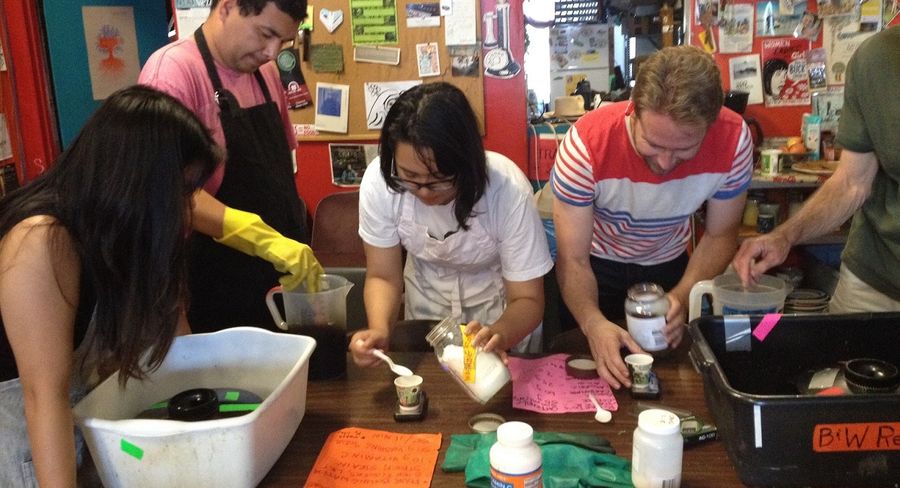
Ricardo Leite's Eco Bleach for Reversal Film
Ricardo Leite is a Portuguese filmmaker working in a variety of formats. Check out his work here.
-
800 ml hydrogen peroxide (9% solution)
-
200 ml lemon or lime juice
-
Distilled water up to 1000 ml. Mix with lemon or lime juice. PH should be around 2-3 at 24 degrees celsius.
The first part is similar to how you would develop your film without reversing:
-
Place film in water @ 28 – 30 degrees celsius – 1 min
-
Develop in caffenol @ 28-30 celsius – 17- 20 min
-
Rinse film in new water – 10 min
-
Place film in eco bleach @ 38 degrees celcius – 11.5 min
-
Water rinse 5 min
-
Re-exposure of film to light, you can bring it out to the sunshine in a water bucket for 2.5 min
-
THEN you got back to the caffenol to do a 2nd developer – 20 minutes
-
Water rinse 10 min
-
Hang to dry, project, enjoy!
Optional
-
Fix film for 5 min in commercial fix
-
Final rinse
*reversal film will already be fixed by bleaching process so this final fix isn’t necessary
Traditional Development (with chemicals)
If you don’t want to do the eco way of developing you can do it the traditional way with chemicals which is really similar. You can buy dektol developer and film fixer at most film and photo stores.
-
Place in water for 1 min
-
Use Dektol developer ( I think the center uses D19) for 5 minutes
-
Water rinse for 5 min
-
Fix for 5 min
-
Water rinse for 10 min

THE GLOBAL FILM COMMUNITY
EPFC is lucky to be part of a global network of community and artist-run film spaces who all learn from and support each other.
Some of our favorites are:
The Squeaky Wheel (Buffalo)
LIFT (Toronto)
Filmwerkplaats (Rotterdam)
Baltic Analog Lab (Riga)
Club del Super 8 (Buenos Aires)
Arcoirirs (Buenos Aires)
Laboratorio Experimental de Cine (Mexico City)
Hanoi Doclab (Hanoi)
Mono No Aware (Brooklyn)
Laboratorio FAC (Montevideo)
Iris (Vancouver)
Process Reversal (Denver)
Agx (Boston)
Nano Lab (Victoria, Australia)
And there are many more all over the world!
OTHER SERVICES AT ECHO PARK FILM CENTER
Some of our services include:
-
Telecine (transfer of 16mm and super 8, and 8 mm film to digital files)
-
Intro workshops to 16mm & Super 8 that including camera mechanics, cinematography, hand-processing and projection
-
Eco – processing workshops
-
Loop workshops
-
Direct animation
-
Film tinting and toning
-
16mm in-camera special effects
-
Phytograms and cyanotypes
-
Longer form classes for adults and youth focusing on making experimental documentaries on film
-
Affordable equipment rental of film and video equipment
Plus we have a 55-seat microcinema so you can share your finished or work-in-progress films with the community!
Come visit us! Check out all the latest EPFC screenings, workshops and special events at http://www.echoparkfilmcenter.org/
Nicole Ucedo
Nicole Ucedo is currently pursuing her MA at UCLA in Cinema and Media Studies. She holds a BA in Film Production from Bard College and is an active instructor and co-op member at the Echo Park Film Center. Her personal films focus on investigating our movements through spaces and places with a focus on Los Angeles.
